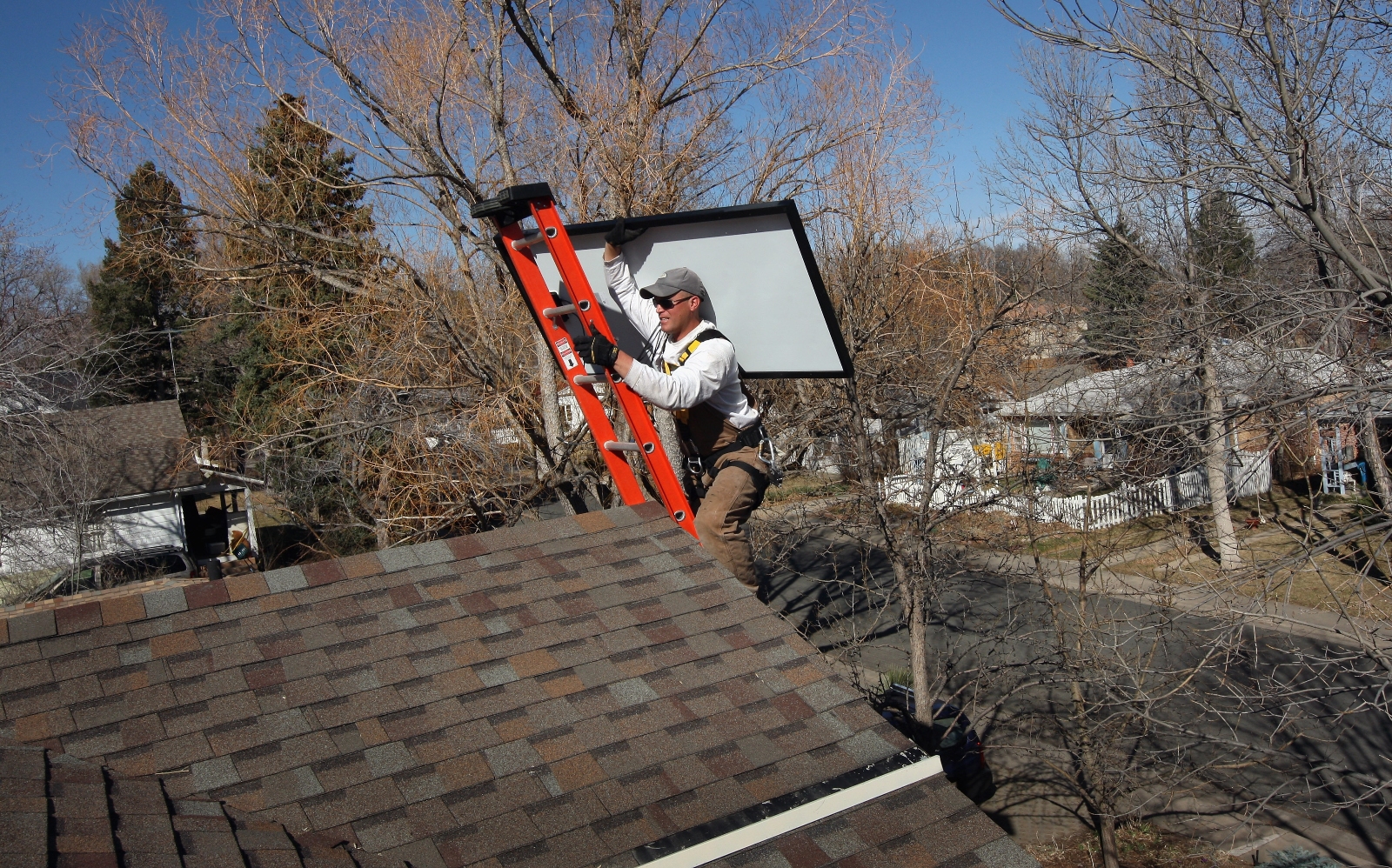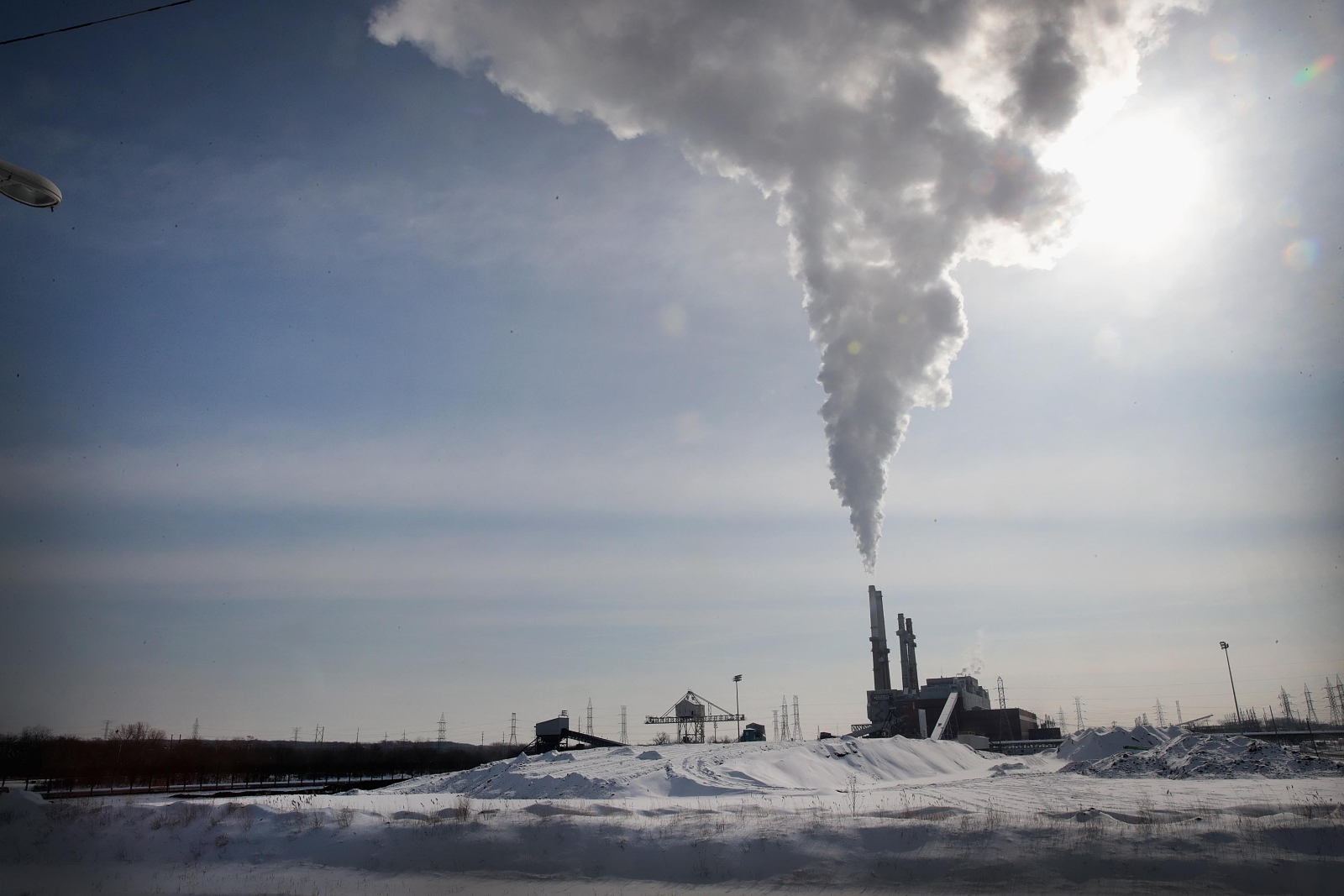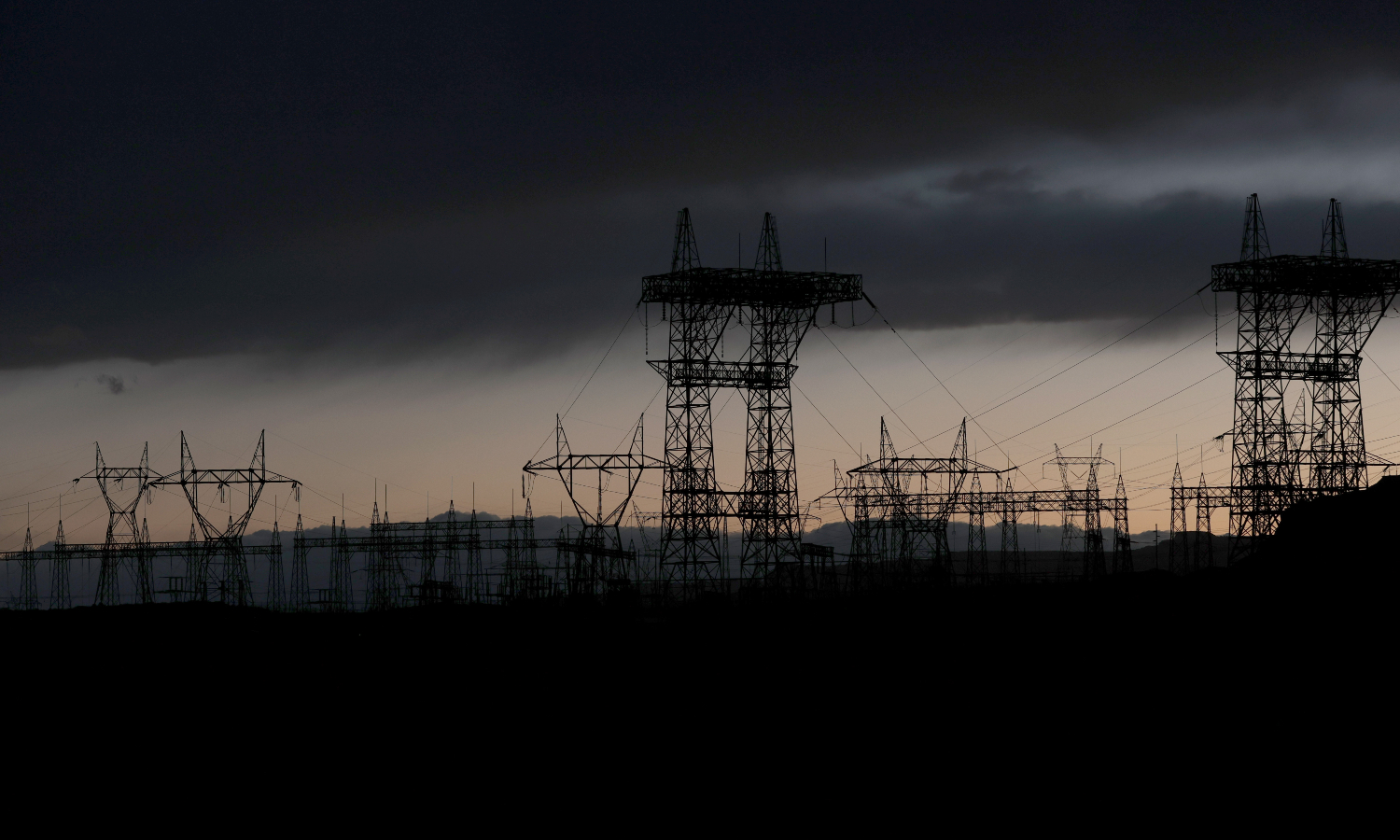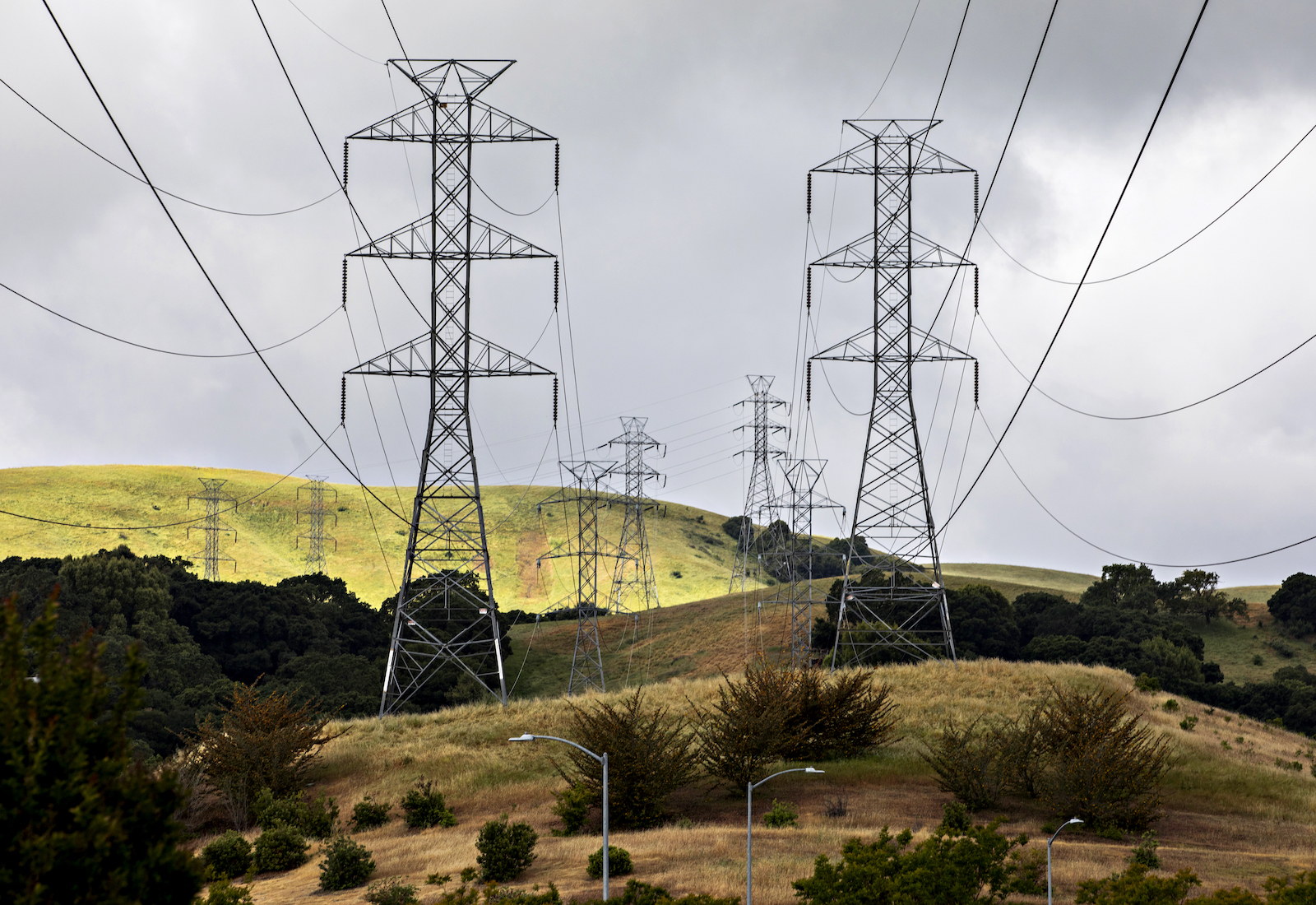A typical electricity bill leaves the customer with the sense that she knows exactly what she’s paying for. It might show how many kilowatts of power her household has used, the costs of generating that electricity and delivering it, and the amount that goes to taxes. But these bills can hide as much as they reveal: They don’t indicate how much of the customer’s money is being used to build new power plants, for example, or to pay the CEO’s salary. They also don’t show how much of the bill goes toward political activity — things like lobbying expenses, or litigation against pollution controls.
Most U.S. utility bills also fail to specify that they’re collecting dues payments for trade associations. These organizations try to shape laws in electric and gas companies’ favor, in addition to more quotidian functions like coordinating regulatory compliance. On any given billing statement, these charges may only add up to pennies. By collecting them from tens of millions of households, however, trade associations have built up enormous budgets that translate to powerful political operations.
The Edison Electric Institute, an association that counts all of the country’s investor-owned electric utilities as its members, is the power industry’s main representative before Congress. With an annual budget of over $90 million, Edison is perhaps the largest beneficiary of the dues-collection baked into utility bills. In recent years, it’s attracted attention for its national campaign against rooftop solar panels, and for its role in the legal fight against the Obama administration’s Clean Power Plan.
Within the next year or two, however, this financial model could come to an end. The Federal Energy Regulatory Commission, or FERC, the top government agency overseeing the utility industry, is considering a rule change that would make it harder for companies to recover these costs. While utilities are already nominally barred from passing lobbying costs along to their customers, consumer advocates and environmental groups argue that much trade association activity that isn’t technically “lobbying” under the IRS’s definition is still political in nature — and that households are being unfairly charged for it.
Emily Fisher, Edison’s general counsel, said the organization works with its members to make sure customers aren’t held responsible for the portion of the budget that goes toward lobbying. Advocates counter that this is essentially an honor system, because often regulators don’t have time to look closely at how Edison’s revenue is being spent. Instead, the advocates want these costs to be non-recoverable by default. They say the burden should be on utilities to prove that dues passed on to ratepayers are not going toward prohibited political activity.
Half a dozen liberal senators, including Bernie Sanders, Elizabeth Warren, and Sheldon Whitehouse, are pushing for the change, along with numerous state governments and several hundred advocacy groups.
The argument that has dominated this discussion so far has been about consumers’ rights. Ratepayers have been “captive” to the industry, the senators wrote in a joint letter to FERC, and the trade associations use their money to “lobby for policies that frequently run counter to ratepayers’ interests.” These policies might include the right to build unnecessary power plants (the costs of which get passed on to ratepayers) and to impose extra charges on customers who use solar panels. This is a timely argument, given that millions of households have fallen behind on their utility bills since the pandemic began, and many face the threat of having their power, water, and gas shut off.
“Every penny matters,” said Howard Crystal, the legal director of the nonprofit Center for Biological Diversity, who has led the effort to get the billing policy changed.
But there’s a second concern motivating many of the advocates — one that supersedes consumers’ rights, in terms of its scale and urgency. In their eyes, this policy question is an important front in the battle against climate change. “The reality of our world today is that utility companies are principally fossil fuel companies,” Crystal said.
While the electric industry has made huge investments in renewable energy over the past 15 years, it still depends on coal and gas for roughly 61 percent of the energy it generates. In a 2021 report, the Sierra Club looked at the 50 utilities most invested in fossil fuels and found that they only planned to retire a quarter of their coal generation by 2030. Edison and other trade groups have played a role in resisting a speedier transition. They have fought for utilities’ rights to build more gas-fired power plants, pressed for more lenient rules on air emissions, and engaged in public-relations campaigns to defend the industry’s relatively slow adoption of renewables. For these reasons, Crystal and others hope this rule change will be a step toward diminishing the trade associations’ power.

Edison has influence over almost every American household, but still keeps a low enough profile to avoid being a household name. For almost as long as there’s been an electricity industry, the institute has been a fixture in American politics; it was born in 1885 as the National Electric Light Association. As Richard Rudolph and Scott Ridley document in their 1986 book Power Struggle, the organization dropped its original name in the mid-1930s, when the Federal Trade Commission exposed a propaganda campaign the association had waged to maintain private control over electricity generation (instead of having publicly-owned co-ops take on the job). The organization took on its current name to associate itself with the revered, recently deceased Thomas Edison.
Edison found itself in the news for a second time in the early 1980s, when the public was on edge about spiking electricity rates and nuclear safety (following the meltdown of a nuclear power reactor in Pennsylvania). Many states had rules saying that utility companies couldn’t bill customers for their political activities, but no one was looking closely at their books to actually enforce these rules. State regulators launched an investigation into the industry’s finances and estimated that utilities were charging customers more than $10 million a year (the equivalent of $26 million now), in violation of the laws of most states, for the lobbying expenses of Edison alone. Edison claimed that only 2 percent of its budget went to lobbying, but the regulators believed it was as high as 35 percent.
In response, at least a dozen states took additional measures to stop this practice. The National Association of Regulatory Utility Commissioners, a group of state regulators that goes by the abbreviation NARUC, also began auditing the utilities every year, trying to sort out exactly how they were spending their money.
Much of Edison’s work in these years was odious to environmentalists. It lobbied against emission controls designed to reduce acid rain, for instance, and sponsored a 1991 ad campaign meant to discredit climate science. (“Who told you the earth was warming … Chicken Little?” asked one representative ad.) Nevertheless, Fisher, Edison’s current general counsel, said the audits never led to any charges being disallowed from reimbursement. In the mid-2000s, they abruptly ceased. NARUC did not respond to Grist’s request for an explanation, but Fisher said the organization had come to see them as “a lot of work for no benefit.”
Some regulators, however, did see benefit in the audits. Karl R. Rábago, an electric utility industry consultant, said that when he was a regulator in Texas in the 1990s, he found them immensely helpful.
“The audit called out the things that were more in the area of political and regulatory speech, as well as technical lobbying,” he said. As a result, “the utilities didn’t even ask” to recover costs like these that didn’t qualify as recoverable under the law — so there was no need for further regulation to disallow them.
The audits typically found that somewhere around half of Edison’s expenses went toward activity that many people would interpret as political. The 2006 audit, for instance, showed that 56.88 percent of the organization’s spending was for legislative advocacy, legislative policy research, regulatory advocacy, and regulatory policy research. (Edison has countered that being involved in regulatory decisions is simply one of its core functions, one that’s “essential” to the operations of its members.)
David Pomerantz, an industry watchdog who directs the San Francisco-based Energy and Policy Institute, suggested a different reason for the end of the audits: the influence Edison has exerted on NARUC. He noted that it sponsors NARUC’s annual conferences, paying for cocktail hours and helping to select speakers.
NARUC did not respond to Grist’s requests for comment. Brain Reil, Edison’s spokesperson, said sponsoring these conferences is a routine matter for Edison. “NARUC conferences are valuable policy discussion forums,” he wrote in an email, “and like most big meetings, no one organization is able to front the entire cost.”
In 2017, Pomerantz and his colleagues were the first to publish research based on Edison’s tax filings, and their work illuminates a few trends in Edison’s finances in recent years. For one, Edison’s own estimates of how it spends on political activity are far lower than 50 percent. It said in a recent statement that only 14.3 percent of its dues revenue from last year went toward lobbying. Also, since the audits ceased, the budget has steadily grown from $68 million in 2004 to $90 million in 2019. This increase has been funded directly by ratepayers: Edison’s yearly revenue from membership dues increased from $54.5 million in 2004 to $76.3 million in 2018. (State records also bear this out: Florida Power & Light, for example, recovered about $1.45 million in Edison dues from ratepayers in 2008, but it was on track to recover more than $2.45 million in 2018.)
The tax records also give clues about how the money is spent. The largest share goes to personnel, including hefty salaries for Edison’s executives. Tom Kuhn, the association’s president, saw his compensation increase from $1.2 million in 2004 to $5.5 million in 2018, making him one of the highest paid executives of any trade association. Other executives have also received massive raises. In exchange for this largesse, one of the benefits Edison gets is an extensive network of political connections. For example, one of its current vice presidents, Brian Wolff, was previously Nancy Pelosi’s political director and the head of the Democratic Congressional Campaign Committee.
Edison officials don’t deny the electricity industry’s blemished history on matters of climate. But Fisher argues that over the last two decades the industry has seen “an evolution in terms of how we think about ourselves,” and has become far more environmentally conscious. “We are on a consistent downward trajectory in terms of emissions levels,” she said, adding that much of the group’s political activity reflects this, such as its advocacy for the clean-energy provisions in the Build Back Better Act.
There’s no question that the industry is shifting toward renewables. Electric utilities have retired hundreds of aging coal plants since 2010, and in 2020 the U.S. produced more electricity from renewable sources than it did from coal for the first time in history. At the same time, it’s clear that private utilities want to be allowed to make that transition on their own timeline and their own terms, in ways that ensure the best returns for their investors. It seems one of Edison’s priorities is protecting its members’ right to do this.
In addition to its formal lobbying, it’s important to understand Edison’s role in coordinating and advising the political work that individual utilities take on. One example of this centers on the Obama administration’s Clean Power Plan. The plan called for reducing the carbon emissions from electricity generation by a third come 2030, and it aimed to achieve this by assigning each state its own target. Edison lobbied for a delay in implementation and for lighter regulations on coal. When the final version was released, Kuhn, Edison’s vice president, announced qualified support, thanking the administration for the “significant outreach” it had done with the industry.
At the same time, however, Edison helped back a legal fight against the new rules by serving as conduit for its members to donate to the Utility Air Regulatory Group, or UARG, an organization that was created to oppose the Clean Power Plan. It collected $7.7 million in donations for the organization, and it lent its accounting services to UARG as well. In the end, the legal challenges succeeded, causing the plan to be delayed until then-President Donald Trump’s Environmental Protection Agency administrator, Scott Pruitt, announced plans to scrap it in 2017.* (In the end, the objectives of the Clean Power Plan were achieved even without the regulation, suggesting to some environmentalists that its goals had been too modest all along.)
Edison has also coached its members on running lobbying campaigns at the state level. And since 2012 it has been quarterbacking a campaign against rooftop solar panels, knowing its members stand to lose profits as customers generate more of their own power. With guidance from the trade association, individual utilities have lobbied their state legislatures to pass laws making rooftop solar installation less attractive to consumers. A main target of their opposition has been net metering, the rule that lets customers sell excess power back to utilities at retail price, which is a popular way of offsetting the cost of installing solar panels. Utility companies have pushed to lower the caps on how much energy residents can be reimbursed for, and they’ve also urged state legislators to impose fixed charges on residents who use solar panels.
Edison’s argument, which is often repeated by its members, is that net metering lets solar customers freeload on the power grid, forcing residents without solar panels to cover all the operational costs. “It’s not like we just eat those costs,” Fisher said. “Those get re-allocated to everybody else.” She added that the expense of installing solar panels means that this shifting cost burden falls disproportionately on less affluent customers. But the significance of this “cost shift” has been debated heavily. A comprehensive study, conducted by a U.S. Department of Energy lab in 2017, determined that the effects on the bills of non-solar customers were “negligible,” and that other factors — particularly capital projects by utilities (which customers can be forced to pay for) — have much larger effects.
Nevertheless, the industry’s efforts in this area have paid off. As of last year, more than 20 states had either put major restrictions on net-metering benefits or imposed additional charges on solar users.
Edison has also resisted climate and environmental regulations in other ways. In years past it has argued for a more flexible interpretation of airborne pollutant standards, and last year it pushed to have natural gas included under any “clean energy” standard passed by Congress. Edison has also donated to organizations that are well known for their opposition to climate regulation, such as the U.S. Chamber of Commerce, the American Legislative Exchange Council, and the State Policy Network.

It was the 2017 report by Pomerantz and his colleagues at the Energy and Policy Institute that inspired the current push for a federal policy change. Then, last year, the Center for Biological Diversity helped instigate a new policy in North Carolina that makes it harder for utilities to charge customers for political expenditures. New York and New Hampshire have also passed similar policies in recent years. In March 2021, the Center for Biological Diversity filed a petition asking FERC to make this kind of change at the federal level. Under the proposal, trade-association dues and other costs would automatically go into an account that customers cannot be billed for. In order to recover that money from ratepayers, utilities would have to make a case that customers benefited from those expenditures.
FERC announced in December that it was taking the matter under consideration. Since then, there’s been an outpouring of support. The attorneys general of 11 states have urged FERC to go through with the change, and in Louisiana, Ohio, and California, utility regulators have also submitted comments in its favor. In February, more than 300 third-party groups (among them the Democratic Socialists of America, United Native Americans, and the Small Business Alliance) also signed on to a letter of support. The next update from FERC is likely to come in the fall or winter.
There’s no telling which way the five-member commission will rule. Two members, Allison Clements and Mark Christie, have so far said it’s at least important to consider tightening up the policies. A third, James Danly, objected to taking up the matter at all, saying that he feared the inquiry would “result in burdening protected expressive conduct.” Four of the current commissioners were nominated by former President Donald Trump, but it’s not clear that the votes will fall along party lines. As Pomerantz notes, the argument that customers shouldn’t be forced to pay these dues can as easily be made from conservative or libertarian principles as from liberal or leftist ones.
If the rule change does go through, the question becomes how much it will matter. Utility companies could certainly afford to pay their dues to Edison out of other coffers — for instance, the ones that go toward shareholder dividends or compensation for executives. But as the Center for Biological Diversity’s Crystal points out, they would be forced to decide whether it was worth the cost, when that money could instead go toward salaries, returns for shareholders, or other expenses.
Pomerantz also noted that trade associations don’t represent the totality of utility companies’ lobbying. Whereas groups like Edison have a large presence in Washington, D.C., companies do most of their own lobbying at the state level. To the extent that customers are funding this activity, some of it can only be addressed by state governments. Still, Pomerantz is eagerly waiting for the commission’s decision.
“Regulators have to cut off the flow of free money,” he said. “The trade-association rule right now is the clearest, most obvious thing that FERC can do.”
*Correction: This story originally misidentified the title of Trump administration official Scott Pruitt, and it mistakenly referred to Pruitt’s chief of staff as a former Edison executive. (The chief of staff who was a former Edison executive worked instead for Rick Perry, the Trump administration’s secretary of energy.)




